Huawei Ascend G7 Review
Huawei Ascend G7 Review
Awesome big-screen phone at a pretty low price
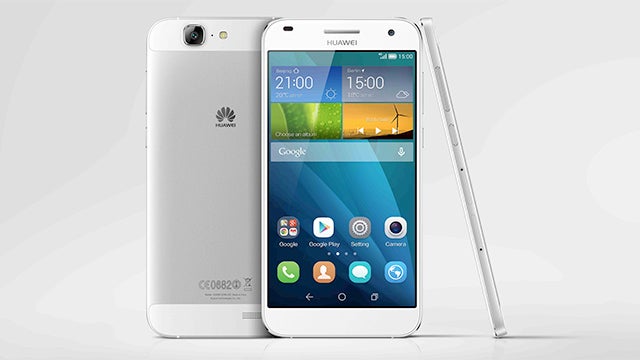
Sections
- Page 1 Huawei Ascend G7 Review
- Page 2 Software and Performance Review
- Page 3 Camera Review
- Page 4 Battery Life, Sound and Verdict Review
Verdict
Pros
- Excellent battery life
- Nice metal body
- Large screen
- Good value
Cons
- Slightly low-dpi screen
- Some software quirks
Key Specifications
- Review Price: £199.00
- 1.2GHz Snapdragon 410 processor
- 2GB RAM
- 5.5-inch 1280 x 720 pixel screen
What is the Huawei Ascend G7?
The Huawei Ascend G7 is a low-key phone that deserves a bit more attention than it’ll probably get. It’s not heading to a half-dozen carriers and won’t be supported by millions in advertising.
However, it’s a phone we’d strongly advise seeking out.
It’s available for under £200 SIM-free, but that gets you the sort of specs and build quality you’d have to fork out at least £300 for if you were desperate for a Samsung phone. At every turn, it pretty much matches the Samsung Galaxy A5, but has a bigger screen.
The software is a little quirky, the camera slightly slow on occasion and the screen a little low-res, but otherwise the Huawei Ascend G7 is a phone all budget buyers should consider this year. It offers excellent value.
SEE ALSO: Best Android Phones
Smartphones Buyers Guide
Huawei Ascend G7 – Design
The first surprise of the Huawei Ascend G7 is its design. Despite selling for around the same price as the 5-inch Moto G, this phone is not too thick, or made largely of plastic.
It has more in common with Huawei’s higher-end phones than its direct predecessor, the plasticky Huawei Ascend G6. Most of the back is aluminium, with a unibody style that is pretty rare in phones of this price.
SEE ALSO: Best Cheap Smartphones
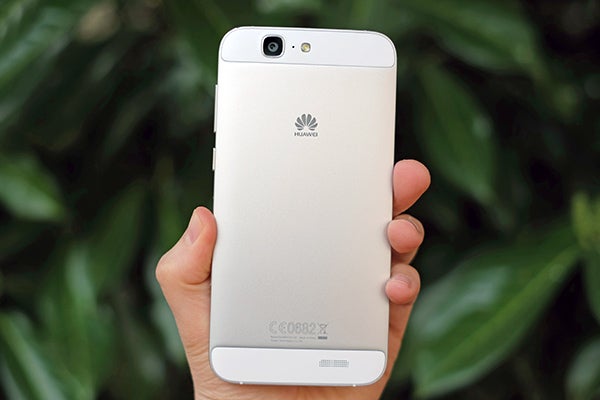
Huawei’s phones are rarely style icons, and neither is this one, but among its price peers it looks and feels great. It’s hard and dense, and much slimmer than most at the price. It’s only 7.6mm thick, making sure it’s fairly easy to hold and use despite having a large 5.5-inch screen.
Past Huawei design blunders have been avoided too. There are no naff-looking soft keys because they’re all-software here and the slim body dimensions haven’t been achieved by using a tiny battery. We’ll be testing it fully later in this review, but here’s a spoiler: thanks to a 3000mAh unit the Huawei Ascend G7’s stamina is very good.
SEE ALSO: Best Phablets 2015
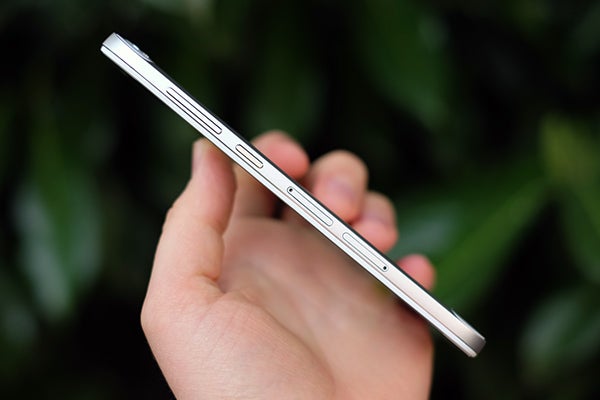
It’s also practical. The power button has been moved from its traditional spot on the top edge to the side, within reach of your thumb, and even has a different texture to the volume rocker above. This makes feeling it out in your pocket a doddle.
The Huawei Ascend G7 gets a lot right.
Being a unibody phone, it uses trays for the micro SIM and microSD slots, again giving you a touch of quality that’s pretty rare in a phone this cheap. Some of you might not even need a memory card, though, because the Huawei Ascend G7 has 16GB of internal memory. From the bigger-brand manufacturers you’d usually only get 8GB at this level.
SEE ALSO: Best Smartphones and Mobile Phones
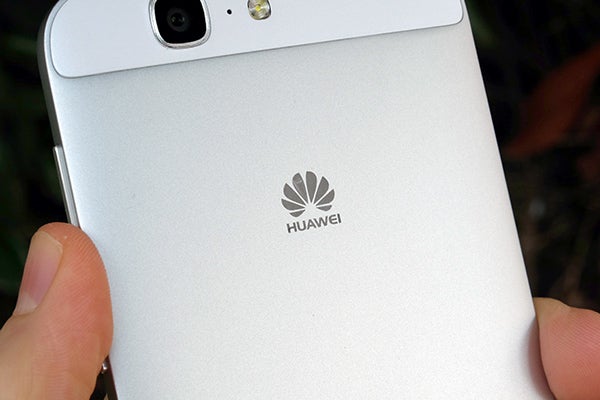
In fact there are so many little bits and bobs that are slightly out of place that we started to wonder whether Huawei accidentally chopped £50 or so off the phone’s RRP during a late-night marketing meeting. Either way, we get the benefit.
Perhaps the most important extra, though, is 4G. We’re currently at the point where most, but not all, lower-cost phones have 4G. This one does.
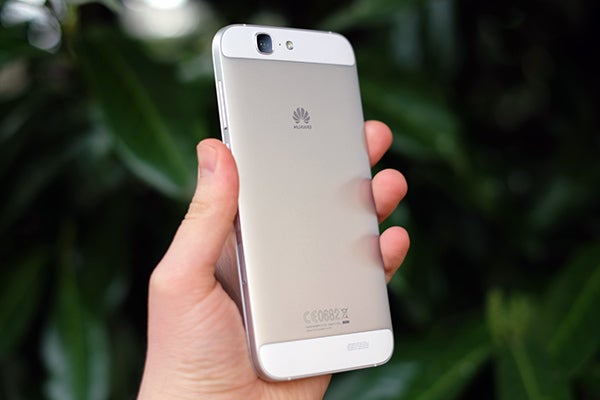
In 2015 we’ll see almost all phones above £100 include 4G. It’s not a luxury extra anymore, it’s becoming the norm, but we’re currently amid this transition. Unless you’re after a really dirt-cheap mobile phone that is.
NFC is onboard too, rounding off what is really quite a great array of features for a £190 SIM-free phone. If this is how Huawei’s looking to build its brand in 2015, we approve.
Huawei Ascend G7 – Screen
One area where Huawei really stretches the Ascend G7’s limited resources is the screen. It has a 5.5-inch display, putting it closer to giant-screen phones like the Note 4 than most budget mobiles, or even most regular flagships.
Such a large display is great for games, for watching Netflix and for browsing. Sometimes bigger is better.
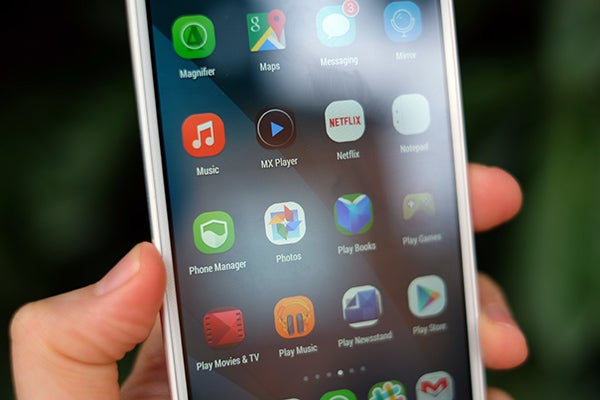
The potential issue: it’s only 720p, where you’d hope for at least 1080p in a phone of this size. We found the slight lack of pixels fairly obvious in the 5-inch Moto, so the key question is exactly how bad is the pixellation?
Not too bad at all, as it happens. While pixel density is a slightly-compromised 267ppi, there’s more to an appearance of sharpness than just density.
First, the underlying pixel structure of the Huawei Ascend G7 display is not too apparent. In some lower ppi screens you can see a sort of grid structure that’s a constant reminder you have a ‘sub Retina’ screen. Some people call this ‘screen door effect’. But here everything looks fairly smooth, turning the lower pixel density into an issue of slight softness rather than a more obvious pixelly effect.
This is a sign the Huawei Ascend G7 uses a fairly nice-quality LCD screen. It’s of the IPS type you find on iPhones, and absolutely loads of other mid-range and high-end phones. There is some colour/contrast distortion at one extreme angle that shows its a few steps down from what’s seen a much more expensive phone, but otherwise viewing angles are fairly good.
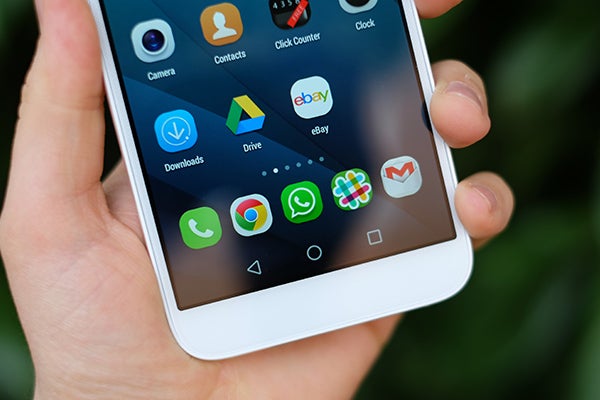
Colour reproduction is quite natural-looking too, lacking the sort of obvious over- or under-saturation that often separates good screens from bad ones. You also get some control over the character of the Huawei Ascend G7’s screen.
Hiding in the Settings menu is a colour temperature slider that tweaks the white balance slightly turning it warmer (an orange tinge) or cooler (a blue tinge). There’s no colour saturation fiddling, but we were very happy with the tones on offer in the Huawei Ascend G7 anyway.
Even the periphery elements of the Huawei Ascend G7 screen are more-than solid. There’s an Auto brightness setting, top brightness is reasonably good and the display has a strong anti-glare coating that we’re surprised to see in a phone with so many other ‘extra’ features. It still struggles a little on bright sunny days because it doesn’t go to the same lengths out doors as other phones. Fiddling with contrast and colour as well as brightness is also useful in increasing outdoors visibility, and there doesn’t seem to be much/any of that going on here.
The top layer of the screen is Gorilla Glass 3, the toughened glass used by most of the biggest phone brands. It should fare pretty well in your pocket. If anything it’s the aluminium rear you need to worry about scratching, not the glass front.
How we test phones
We test every mobile phone we review thoroughly. We use industry standard tests to compare features properly and we use the phone as our main device over the review period. We’ll always tell you what we find and we never, ever, accept money to review a product.


